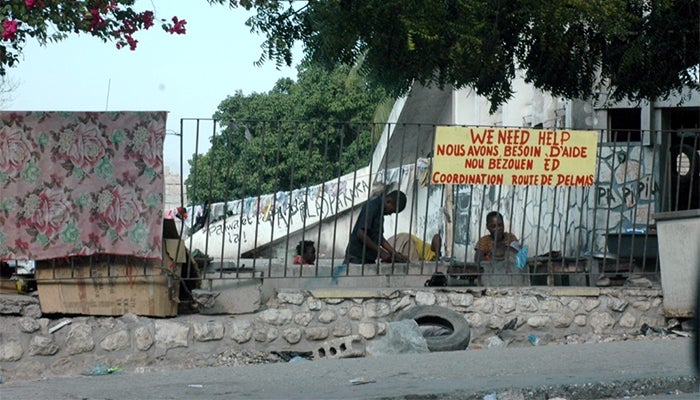
Photos taken by José Holguín-Veras 10 days after the earthquake.
Extreme events pose serious logistical challenges to emergency and aid organizations active in preparation, response, and recovery operations, as the disturbances they bring about turn normal conditions into chaos. On May 6, José Holguín-Veras, the William H. Hart Professor of Civil and Environmental Engineering and director of the Center for Infrastructure, Transportation, and the Environment, hosted a webinar titled “Lessons of Large Disasters for Post-Disaster Response.”
“In the case of catastrophic events, delivering the critical supplies required becomes an extremely difficult task because of the severe damages to the physical and virtual infrastructures and the very limited, or non-existent, transportation capacity,” said Holguín-Veras. “In this context, the recovery process is made more difficult by the prevailing lack of knowledge about the nature and challenges of post-disaster humanitarian logistics.”
Professor Jose Holguín-Veras’ research is not for the faint of heart. He was in New Orleans when the levee failed in the wake of Hurricane Katrina in 2005. He traveled to Haiti less than a week after the Jan. 12, 2010, earthquake. And he visited Japan in 2011 as soon as U.S. travel restrictions to the area were lifted following the 2011 earthquake, tsunami, and nuclear crisis.”
The presentation was based on the quick response fieldwork conducted by Holguín-Veras and his colleagues on the largest disasters of recent times, which include, among many others, the 2011 Tohoku disasters in Japan, the 2010 Port-au-Prince earthquake, and the 2005 Hurricane Katrina.

Jose Holguín-Veras
The May 6 presentation discussed the important lessons that ought to be learned from these disasters, and the implications for the response to the Nepal earthquake.
Professor Jose Holguín-Veras’ research is not for the faint of heart. He was in New Orleans when the levee failed in the wake of Hurricane Katrina in 2005. He traveled to Haiti less than a week after the Jan. 12, 2010, earthquake. And he visited Japan in 2011 as soon as U.S. travel restrictions to the area were lifted following the 2011 earthquake, tsunami, and nuclear crisis.
At these and dozens of other disaster sites, Holguín-Veras took careful inventory of the relief policies, procedures, preparations, and infrastructure in place. His work, funded by the National Science Foundation (NSF) and other federal agencies, aims to analyze what went right, and identify what could be improved in preparation for future disasters. Holguín-Veras is an adviser to many international governments on these matters.
Holguín-Veras is the recipient of a number of national awards, including the 2013 White House Transportation Champion of Change Award, the Milton Pikarsky Memorial Award in 1996, and the National Science Foundation’s CAREER Award, for his contributions to freight transportation modeling and economics.
The Rensselaer Humanitarian Logistics Research Group has pioneered the multidisciplinary study of post-disaster humanitarian logistic operations. Using a holistic approach encompassing field work, quantitative characterization of operations, and basic research on analytical modeling, the group has: identified the key lessons learned from the response to the largest disasters of recent times, translated these lessons into actionable policy recommendations, shared these suggestions with disaster response agencies, and developed new paradigms of humanitarian logistic models that account for material convergence, deprivation costs, and other unique features of post-disaster operations. As part of the field work, the group has conducted detailed analyses of the most prominent disasters of recent times.
Listen to the webinar recording for “Lessons of Large Disasters for Post-Disaster Response,” and to download presentation slides.


